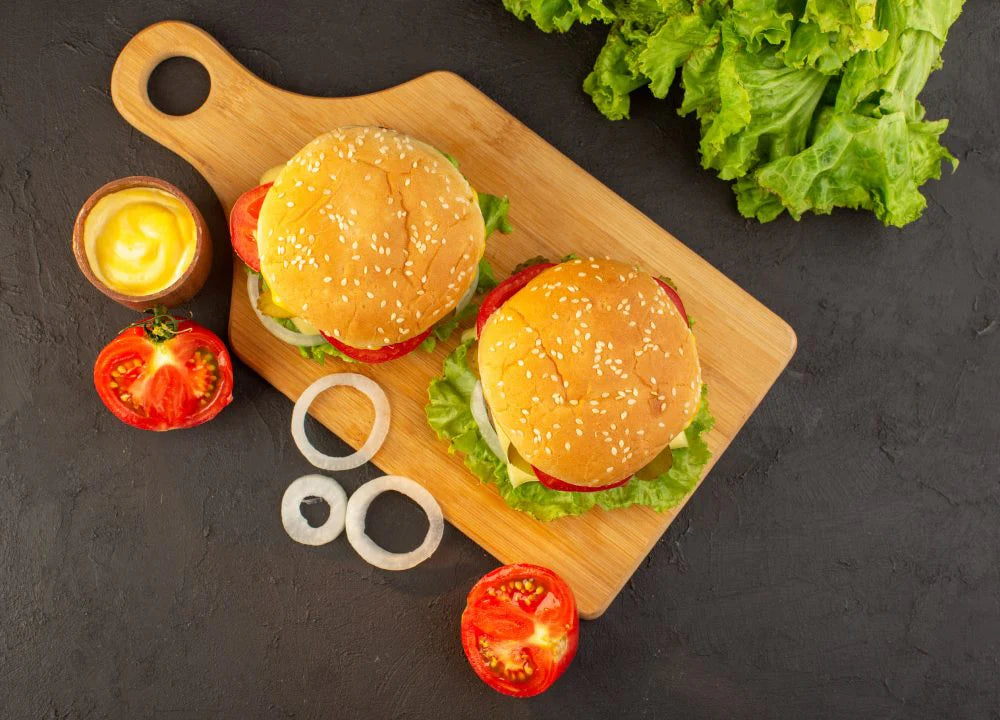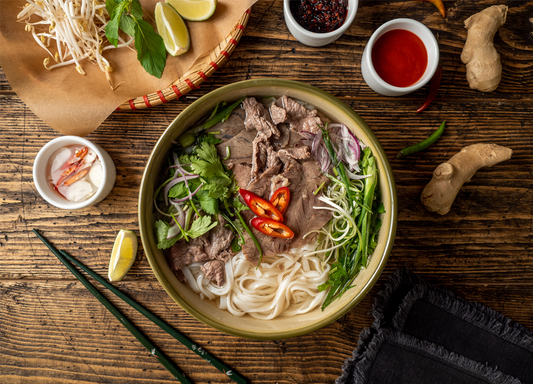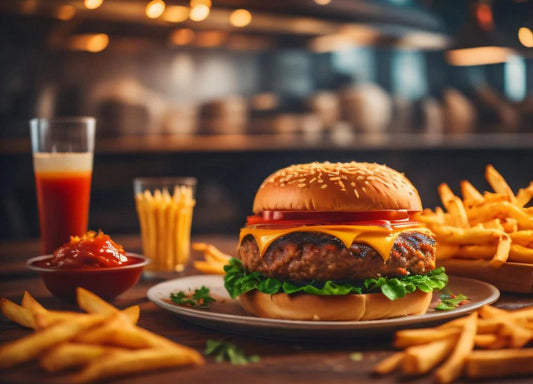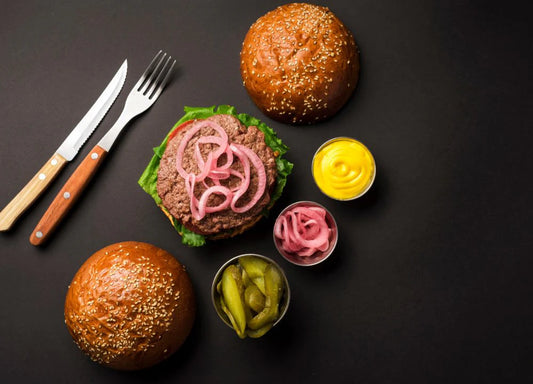The Secret to Perfect Pho Broth: Tips from Top Pho Chefs

Introduction: The Heart of Pho
Pho, the aromatic Vietnamese noodle soup, is celebrated for its rich, savory broth, which is often regarded as the heart of the dish. The broth is a delicate balance of flavors, achieved through a meticulous cooking process that requires time, patience, and skill. As pho continues to gain global popularity, the quest for the perfect pho broth has become a topic of fascination for both home cooks and professional chefs alike. This article delves into the secrets behind creating an exceptional pho broth, with insights from top pho chefs renowned for their mastery of this iconic dish.
The Foundation of Pho: Ingredients and Techniques
To understand the secrets of perfect pho broth, it’s essential to grasp the basic components and techniques that form its foundation. At its core, pho broth is made from simmered beef bones, spices, and aromatics. The key to a flavorful broth lies in the quality of these ingredients and the precision of the cooking process.
1. Selecting the Right Bones
The quality of the bones used is crucial to achieving a rich and flavorful broth. Top pho chefs recommend using a mix of beef bones, including marrow bones, knuckle bones, and oxtail. Marrow bones provide a deep, beefy flavor, while knuckle bones and oxtail contribute to the broth’s richness and gelatinous texture. Some chefs also suggest briefly blanching the bones in boiling water before simmering them to remove impurities and achieve a clearer broth.
2. The Role of Aromatics
Aromatics are the backbone of pho broth’s flavor profile. Traditional ingredients include onions, ginger, and garlic, which are typically charred before being added to the broth. Charring the aromatics enhances their sweetness and adds depth to the flavor. Spices such as star anise, cinnamon, cloves, and cardamom are also essential, providing the distinct, fragrant notes characteristic of pho.
3. Simmering vs. Boiling
Simmering, rather than boiling, is key to developing a clear and flavorful broth. Top pho chefs emphasize the importance of maintaining a gentle simmer to extract the maximum flavor from the bones and spices while minimizing cloudiness. A rolling boil can cause the proteins and impurities in the bones to emulsify into the broth, resulting in a cloudy and less refined texture.
4. Cooking Time and Patience
A perfect pho broth requires several hours of slow cooking. Most chefs recommend simmering the broth for a minimum of 6 to 8 hours, with some traditional recipes calling for up to 12 hours. This extended cooking time allows the flavors to meld and the collagen in the bones to break down, creating a rich, gelatinous consistency.
Expert Tips from Top Pho Chefs
To gain deeper insights into the art of making perfect pho broth, we reached out to several acclaimed pho chefs who have made their mark with exceptional versions of this classic dish. Here are their top tips for achieving the ideal pho broth:
1. Chef Nguyen Thi Hanh – Hanoi, Vietnam
Chef Nguyen Thi Hanh, a celebrated pho chef in Hanoi, shares her approach to creating an authentic and flavorful broth. According to Chef Hanh, the key to a great pho broth is using high-quality beef bones and a precise blend of spices. She advises starting with cold water and gradually heating it to a simmer, which helps to extract the full flavor from the bones without clouding the broth. Additionally, Chef Hanh emphasizes the importance of removing any scum that rises to the surface during the initial stages of simmering to ensure a clear broth.
2. Chef Linh Nguyen – Ho Chi Minh City, Vietnam
Chef Linh Nguyen, renowned for her innovative takes on traditional pho, offers a modern twist on the classic broth. Chef Nguyen recommends using a combination of beef and chicken bones for a more complex flavor. She also suggests adding a touch of fish sauce towards the end of the cooking process to enhance the umami depth of the broth. For a clearer broth, Chef Nguyen uses a fine-mesh strainer and cheesecloth to remove any remaining solids and impurities.
3. Chef Michael Tran – Los Angeles, USA
Chef Michael Tran, based in Los Angeles, has gained acclaim for his modern pho interpretations. He emphasizes the importance of achieving the right balance of flavors by carefully measuring and toasting the spices before adding them to the broth. Chef Tran also advises making a flavorful broth reduction, which can be added to the broth to intensify its taste. For an extra layer of complexity, Chef Tran uses a combination of fresh and dried spices, allowing for a more nuanced flavor profile.
4. Chef Julie Pham – Sydney, Australia
Chef Julie Pham, known for her creative pho dishes in Sydney, highlights the role of freshness in achieving a perfect broth. She advocates for using freshly roasted spices and herbs to maximize their aromatic qualities. Chef Pham also suggests incorporating a touch of sugar to balance the savory elements of the broth and enhance the overall flavor. To ensure a clear broth, she recommends skimming the surface regularly during the cooking process and using a large pot to prevent overcrowding.
Troubleshooting Common Issues
Even with the best ingredients and techniques, creating the perfect pho broth can present challenges. Here are some common issues and solutions provided by top chefs:
1. Cloudy Broth: If your broth turns out cloudy, it may be due to boiling at too high a temperature or not skimming off impurities. To resolve this, make sure to maintain a gentle simmer and regularly skim off any scum that forms on the surface.
2. Weak Flavor: A broth that lacks depth may be due to insufficient simmering time or an imbalance of spices. Extend the cooking time and consider adjusting the spice blend to enhance the flavor. Adding a touch of fish sauce or soy sauce can also help deepen the taste.
3. Greasy Broth: Excess fat in the broth can be reduced by chilling the broth and removing the solidified fat layer that forms on the surface. Alternatively, use a fat separator to skim off excess fat during the cooking process.
4. Overly Salty Broth: If the broth turns out too salty, it may be due to over-seasoning. Dilute the broth with additional water or unsalted beef stock, and adjust the seasoning gradually to achieve the desired taste.

The Final Touch: Assembling the Perfect Pho
Once you have mastered the art of making pho broth, the next step is assembling the perfect bowl of pho. Top pho chefs recommend using high-quality rice noodles, fresh herbs, and a variety of condiments to complement the broth. Key ingredients include tender slices of beef, bean sprouts, Thai basil, cilantro, lime wedges, and sliced chilies. The final presentation should showcase the vibrant colors and textures of the dish, inviting diners to enjoy a well-balanced and flavorful pho experience.
Conclusion: Mastering the Art of Pho Broth
The secret to perfect pho broth lies in the careful selection of ingredients, precise cooking techniques, and a deep understanding of flavor balance. Insights from top pho chefs reveal that achieving an exceptional broth requires patience, attention to detail, and a commitment to authenticity. By following these expert tips and techniques, both home cooks and professional chefs can create a pho broth that is rich, clear, and bursting with flavor.
As pho continues to captivate food lovers around the world, the quest for the perfect broth remains a rewarding and inspiring endeavor. Whether enjoyed in a traditional Vietnamese setting or a modern fusion restaurant, a well-crafted pho broth is a testament to the artistry and dedication of those who bring this beloved dish to life.




